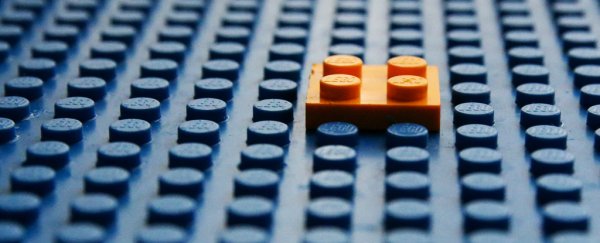Have you ever noticed how we usually try and solve problems by adding more, rather than taking away? More meetings, more forms, more buttons, more shelves, more systems, more code, and so on. Now scientists think they might know the reason why.
A study of 1,585 people across 8 different experiments showed that our brains tend to default to addition rather than subtraction when it comes to finding solutions – in many cases, it seems we just don't consider the strategy of taking something away at all.
The researchers found that this preference for adding was noticeable in three scenarios in particular: when people were under higher cognitive load, when there was less time to consider the other options, and when volunteers didn't get a specific reminder that subtracting was an option.
"It happens in engineering design, which is my main interest," says engineer Leidy Klotz, from the University of Virginia. "But it also happens in writing, cooking, and everything else – just think about your own work and you will see it."
"The first thing that comes to our minds is, what can we add to make it better? Our paper shows we do this to our detriment, even when the only right answer is to subtract. Even with financial incentive, we still don't think to take away."
In one of the experiments, participants were asked to improve a Lego structure so that it was able to take more weight. Half the volunteers were reminded that they could take away bricks as well as add them, and half weren't.
In the group that got the reminder, 61 percent solved the problem by taking away a brick – which was a much faster and more efficient way of stabilizing the structure. In the group that didn't get the reminder, only 41 percent went for the removing bricks approach.
In another test, people were asked to make a grid of colored squares on a computer screen symmetrical with as few clicks as possible, while also taking note of any number 5s that appeared above it – a multitasking scenario designed to add extra cognitive load.
Even though taking away some of the squares was the quickest way to reach the goal, when under this extra cognitive load, the participants were more likely to start adding new colored squares instead.
"Additive ideas come to mind quickly and easily, but subtractive ideas require more cognitive effort," says psychologist Benjamin Converse, from the University of Virginia. "Because people are often moving fast and working with the first ideas that come to mind, they end up accepting additive solutions without considering subtraction at all."
The researchers have a few ideas about what might be going on. Our brains might find additive changes easier to process perhaps, or we might be associating adding with ideas of something that's bigger and therefore better in our subconscious.
There might also be associations in our minds with the status quo being something that needs to be maintained as much as possible – and taking something away is arguably more destructive to the status quo than adding something new.
Beyond Lego bricks and brain teasers, the researchers say their work is important in a much broader sense: for institutions looking to streamline, for example, and even for the human race looking for ways to better manage the planet's resources.
"The more often people rely on additive strategies, the more cognitively accessible they become," says psychologist Gabrielle Adams, from the University of Virginia.
"Over time, the habit of looking for additive ideas may get stronger and stronger, and in the long run, we end up missing out on many opportunities to improve the world by subtraction."
The research has been published in Nature.
